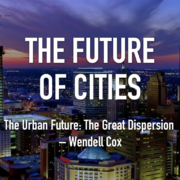Can Houston Avoid L.A.’s Mobility Disaster?
This week we have another excellent guest post from Oscar Slotboom.
Over the past 20 years, Los Angeles County has drastically curtailed highway improvements and poured massive resources into expanding public transit, mostly costly rail lines. The result: disaster.
Tory has mentioned L.A.’s fiasco, including this 2019 WSJ article detailing plummeting ridership and this scathing 2018 report.
Why should we be concerned about the folly in Los Angeles? Because there are voices in Houston, including the majority on Harris County Commissioners Court, who want to bring Los Angeles-style transportation planning to Houston.
Let’s take a close look at the disastrous results for Los Angeles, and we’ll see why we need to stick with Houston’s longstanding emphasis on highway improvements.
High Taxes in L.A. Provide Poor and Worsening Results
LA Metro’s program is paid for with a 2% sales tax. The base sales tax rate in Los Angeles County is 9.5%, with many cities having a rate of 10.25%. This compares to Houston’s 1% Metro sales tax with an overall rate of 8.25%.
California localities can raise funds for transportation projects with 4 funding mechanisms for the 2% sales tax, and L.A. uses 95% of the $22.7 billion funding for transit, as shown in the pie chart adapted from the official page at LA Metro.
Other regions put more toward roads and highways, for example, pro-mobility Orange County uses Measure M to help finance a $2.1 billion project on a section of the 405.
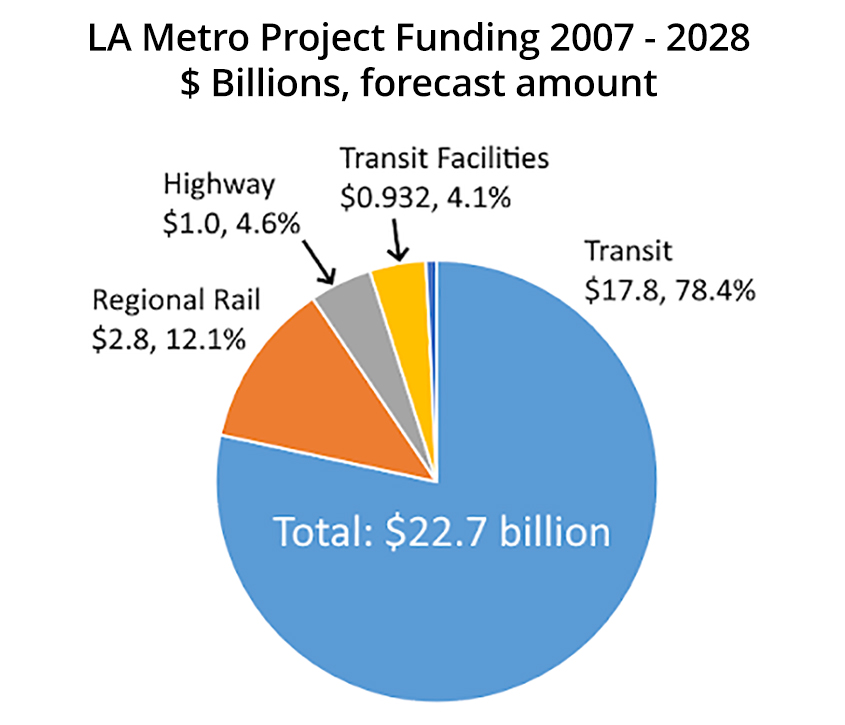
Currently, there is only one major highway project in progress in Los Angeles County, the Caltrans-managed CA 71 freeway upgrade in Pomona, 25 miles east of downtown L.A. Most other projects listed on the Catrans site are complete, or are mainly maintenance work.
Declining Public Transit Ridership
LA Metro public transit ridership peaked in 2013 and was in steady decline through 2019 (pre-Covid), down 21.9% in this period of strong economic growth. Bus ridership has been in a steady downward trend, down 24.9% between 2009 (the earliest data on the LA metro site) and 2019. Data source is the official LA Metro ridership page, which shows plots if you click the Details button.
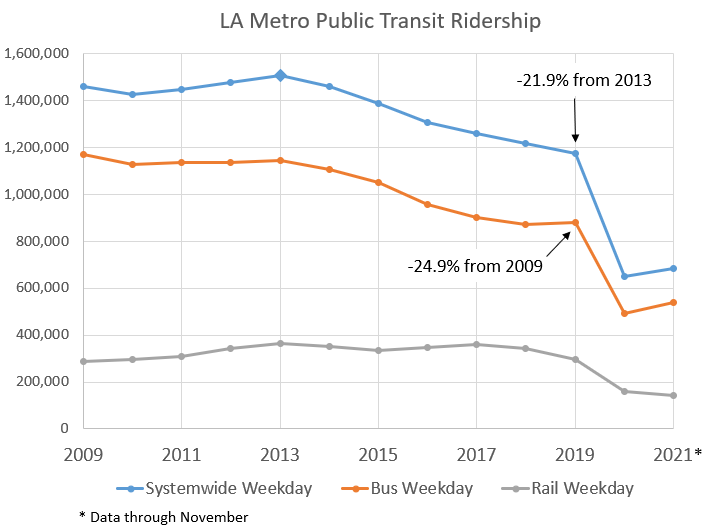
Looking at the chart, we can see that rail ridership was on a plateau from 2013 to 2017, but was in decline in 2018 and 2019. This is a pattern that occurs in many cities. Resources are poured into expensive rail lines which have small increments of increased ridership, but losses in bus ridership often due to service neglect are much greater than the rail increase.
Houston Metro performed much better than LA Metro in the pre-Covid period. Houston lost more ridership than LA due to the great recession in 2008, but from 2012 to 2019 Houston Metro showed increasing or steady ridership while LA was in steady decline. Houston Metro’s strong performance is almost certainly due to the bus service improvements launched in 2015, since the new rail lines opened in 2013 and 2015 have low ridership. (Houston’s ratio in 2020 is much better than L.A. since Houston’s fiscal year was affected by Covid only 6 months.)
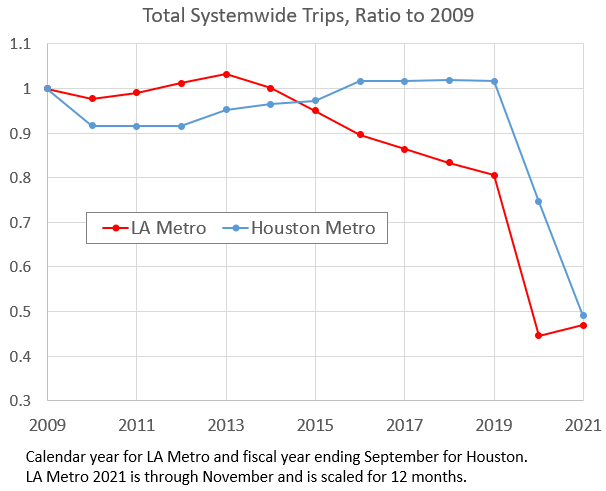
Of course, Covid-19 caused transit ridership to collapse everywhere. The chart below shows the impact on LA Metro over the last 30 months. We can see that bus ridership is recovering more quickly than rail ridership, with bus down 24% compared to 2019 and rail ridership still down 39%. If there’s any glimmer of good news for L.A., it’s that ridership is recovering from Covid faster than most places, as national ridership is still down around 46% as of October.
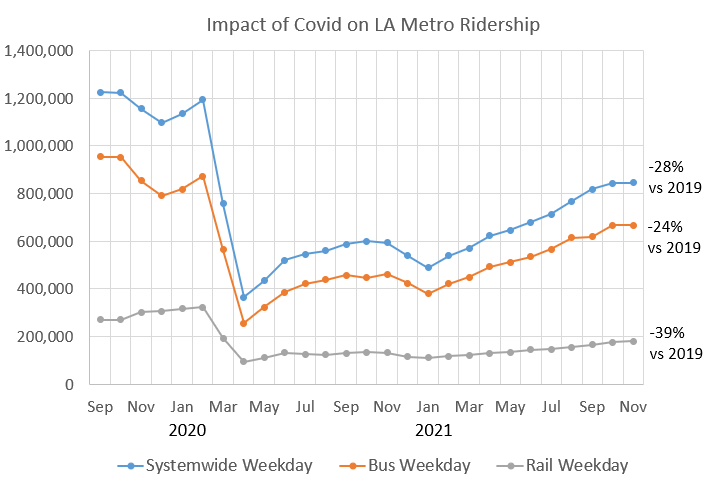
Read the rest of this piece on Houston Strategies.
Tory Gattis is a Founding Senior Fellow with the Urban Reform Institute (formerly Center for Opportunity Urbanism) and co-authored the original study with noted urbanist Joel Kotkin and others, creating a city philosophy around upward social mobility for all citizens as an alternative to the popular smart growth, new urbanism, and creative class movements. He is also an editor of the Houston Strategies blog.




